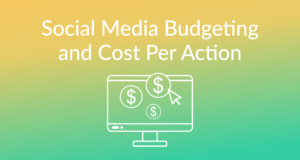Social media metrics are an important tool for businesses to understand because it can show them how well their brands are marketing to consumers online. Social media metrics include all types of activity and engagements from both the brand and consumers. Brands should first set realistic goals and objectives before reviewing data collected from the metrics. Once they have an end goal, the brand will be able to correctly monitor their metrics and compare the current status and results to the ultimate goal.

In order to set goals, brands must understand what the social media metrics are and how they work. The three categories of social media metrics brands should be looking at are activity, success, and impact. The activity category includes posts and promotions, the success category includes impressions and engagement, and the impact category includes traffic and conversions.

Activity
Activity metrics in social media are posts and promotions that are owned and operated by the brand. The brand controls the content being published, frequency of posts, time of posts, boosting content, and running ad campaigns. All of these factors should be monitored because they play an important role in the online success of the brand.
Success
Success metrics are impressions and engagements that measure the results of activity metrics. Success metrics will tell if the brands controlled operations on social media are performing well or poorly. Impressions and engagements include different types of reactions to posts, for example, views, likes, or comments. These will show a brand how different audiences react to the content they are publishing.
Impact
Impact metrics show traffic and conversions from a brand’s various online platforms and how users got to certain pages. This includes traffic and conversions from websites, paid ads, social media posts and more.
There are quite a few ways a brand can go about setting goals for its social media metrics. Five examples are using previous benchmarks, analyzing peers, analyzing competitors, industry benchmarks, and guessing.

- Previous Benchmarks
Some brands have already run social media campaigns or monitored their metrics over time. These brands can analyze their past metrics and see what worked and what didn’t. This is a good way to capitalize on past behavior and maximize certain metrics compared to previous campaigns.
- Analyzing Peers
Taking a look at key metrics from other brands in the same industry can help define a starting point. It is important to know where each brand stands in its industry and how different audiences react to different types of content.
It is important to know how a brand’s competition is doing online. Looking at competing brands’ metrics can help a brand create their own set of goals that will help them stay active and relevant against others.
- Industry Benchmarks
A brand should take a look at different industry benchmarks and how they compare. Taking a look at their own industry could be a good starting point for coming up with a goal. It is important to take into account that although some brands are in the same industry, they have many different factors that could skew average metrics a certain direction.
- Guessing
If a brand does not have previous benchmarks to look at but has a strong general idea of what successful metrics for their brand might look like, then guessing can be a working method for setting a goal. The goal can always be altered along the way as needed.
 Social Media Data Insights & Resources for Social Media
Social Media Data Insights & Resources for Social Media




